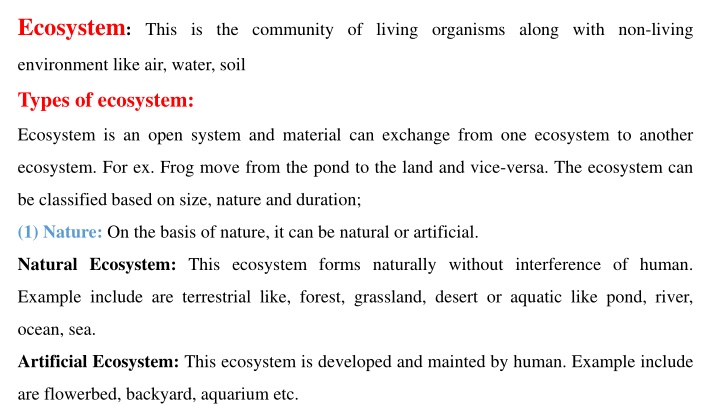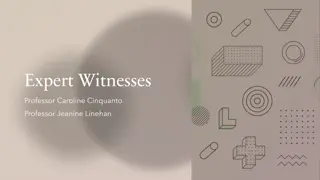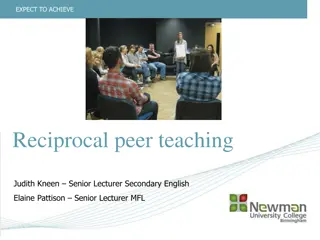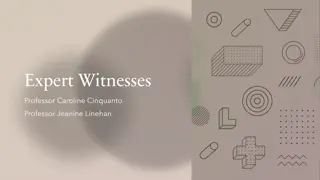
Ecosystems: Nature, Duration, and Size Explained
Explore the concept of ecosystems, including natural vs. artificial ecosystems, temporary vs. permanent ecosystems, and small vs. large ecosystems. Learn about the structure of ecosystems, involving both biotic and abiotic components, and the role of producers in sustaining life within an ecosystem.
Download Presentation

Please find below an Image/Link to download the presentation.
The content on the website is provided AS IS for your information and personal use only. It may not be sold, licensed, or shared on other websites without obtaining consent from the author. If you encounter any issues during the download, it is possible that the publisher has removed the file from their server.
You are allowed to download the files provided on this website for personal or commercial use, subject to the condition that they are used lawfully. All files are the property of their respective owners.
The content on the website is provided AS IS for your information and personal use only. It may not be sold, licensed, or shared on other websites without obtaining consent from the author.
E N D
Presentation Transcript
Ecosystem: This is the community of living organisms along with non-living environment like air, water, soil Types of ecosystem: Ecosystem is an open system and material can exchange from one ecosystem to another ecosystem. For ex. Frog move from the pond to the land and vice-versa. The ecosystem can be classified based on size, nature and duration; (1) Nature: On the basis of nature, it can be natural or artificial. Natural Ecosystem: This ecosystem forms naturally without interference of human. Example include are terrestrial like, forest, grassland, desert or aquatic like pond, river, ocean, sea. Artificial Ecosystem: This ecosystem is developed and mainted by human. Example include are flowerbed, backyard, aquarium etc.
(2) Duration: On the basis of duration, ecosystem can be classified as temporary or permanent. Temporary ecosystem: it is short lived and man made or natural. Example include rain fed pond. Permanent ecosystem: it is long lived and self supported natural ecosystem for very long period. Example includes forest, river etc. (3) Size: Ecosystem is classified as small or large ecosystem. Small: it is small and also known as microecosystm, it can be temporary or permanent for ex. Pond, flowerpot etc. Large: it is large in size and also known as macroecosystem. It is always permanent and mostly natural. For ex. Ocean, river, forest and desert.
Structure of ecosystem: An ecosystem consists of both abiotic and biotic components, which are listed in table below: Main Components Parts of Main Components 1.Biotic components a. Autotrophic components (producer) b.Heterotrophic components (consumer) 1. Macroconsumer (phagotrophs) 2. Micrconsumer (saprotrophs) a. Abiotic components a. Inorganic substances b.Organic substances c. Climate
1. Biotic Components: The living organisms present in an ecosystem form the biotic component: A.Autotrophic Components The term of autotrophic mean (self-nourishing). An autotrophic component is able to fix light energy and manufacture food from simple inorganic substances. This component mainly consists of green plants, blue green algae, photosynthetic bacteria and chemosyntheticmicrobe s member of autotrophic are known (producer).
Producers: The role of producers is to prepare food to provide nutrition to the other organisms present in the ecosystem. There are two types of producers; photoautotrophs and chemotropism. 1.Photoautotrophs: These are green plants which can trap sun light to form carbohydrate, simple sugar from carbon di-oxide and water. This process is known as photosynthesis and these organisms are called as photoautotrophs. 2.Chemoautotrophs: Few bacteria such as sulfur bacteria, nitrifying bacteria, can be able to utilize free energy released from the chemical reactions to prepare organic food with it. They are called chemoautotrophs and the process is known as chemosynthesis.
A.Heterotrophic Components The term (heterotrophic) means other-nourishing so that heterotrophic component utilizes rearranges and decomposes the complex materials synthesized by the autotrophs. The members of heterotrophic component are known as (consumers). Consumers: These are mainly the animals. They are unable synthesize their own food and depends on producers. They utilize the oxygen being released from the producers as well. Several consumers don t get the food from the producers but they are depended on consumers itself. As a result, consumers are related to each other through multiple food chains. They are of the following two types:
1. Macroconsumers Macroconsumers consist of those organisms which are dependent on living being. They are herbivorous, carnivores and omnivores, however the herbivores remain dependent upon the green plants for their food and are classified as primary consumers. Maroconsumers are called secondary and tertiary consumers depending on whether they are carnivores or omnivores, they are also known as phagotrophs. 1. Microconsumers Microconsumers breakdown complex compounds from dead or living organism. They release inorganic nutrients in the environment for the utilization of autotrophs and are known as decomposers, they are chiefly saprotrophic, mainly bacteria, actinomycetes and fungi.
Decomposers: These are mainly bacteria and fungi. Their primary purpose in the ecosystem is to decompose the complex organic material into the simple inorganic material so that it can be used for producers to prepare food.
2. Abiotic components: These factors include the non-living physiochemical factors of the environment. Abiotic factors are as follows: (i) Inorganic substances: Inorganic substances like carbon, nitrogen, oxygen, water, carbon di- oxide, calcium, phosphorus and their inorganic compounds. These are available as free form or dissolved in water and may be adsorbed on the soil particles. (ii) Organic compounds: These are carbohydrates, proteins, lipids, nuceltic acids etc. This material is present in dead organic matter. These are broken into the simple compounds by decomposers in ecosystem for recycling of matter. (iii) Climatic factors: These are factors present in the environment such as temperature, humidity, light, wind, rainfall an atmospheric gaseous etc.






















